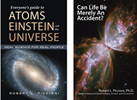NASA’s Gravity Probe B (“GP-B”) just
announced the results of a 50-year-long project to test Einstein’s
theory of General Relativity. This may well be the longest running
scientific experiment in history.
This is a story of heroic efforts to
achieve the seemingly impossible, consuming vast financial and human
resources, with only modest success.
NASA spent at least $750 million on
GP-B, almost canceled it on seven occasions, and finally cut off all
funding three years ago. Money to complete GP-B was raised from private
individuals—an executive at Capital One and the Saudi royal family, who
have a lot more money than NASA.
Over the half-century since GP-B was
first proposed, several scientists spent their entire careers on this
experiment. More than 2000 contributors witnessed the 2004 launch.
Principal Investigator, Dr. Francis Everitt of Stanford University,
devoted 49 years to GP-B, and one of the “new” guys, Dr. John Mester,
who invested “only” 19 years, said: “We’re basically done. None of us
have a job anymore.”
Why devote so much money, time, and effort to test Einstein’s theory?
It must be admitted that GP-B, like the Charge of the Light Brigade,
is more about valor than reason. Other experiments, done in different
ways, have tested the same predictions of Einstein, consumed far less
time and money, and gotten results that are at least as valuable.
But the goal is undeniably important.
Relativity is one of two pillars of physical science; quantum mechanics
is the other. Everything else is based on these two theories. Yet we
know both are imperfect and not entirely consistent with one another.
Finding exactly where these theories fail is essential to developing
better theories.
Beyond pure academic interest, science
and technology are foundations of our economy. Almost every product we
buy relies on knowledge that didn’t exist 100 years ago. These advances
are incorporated into, used to create, or used to transport nearly
everything. As just one example, the GPS system, now integral to our
commerce and our defense, would be worthless without General Relativity.
We need to know just how much we can trust Einstein’s theories.
GP-B tested and confirmed two major
predictions of General Relativity: spacetime wrapping and
frame-dragging. Both predictions were tested in Earth’s gravitational
field by precisely monitoring the rotation of gyroscopes on a satellite
in a polar orbit 400 miles above Earth.
Einstein said space and time are curved
(“wrapped”) by the presence of mass and energy. Generally, the primary
effect is that time flows more slowly where gravity is stronger. Earth’s
mass is quite small on a cosmic scale; it wraps spacetime by only one part in a billion.
In the conditions tested, this wrapping changed the direction of the
gyroscopes’ axes by 1/500th of a degree per year. GP-B measured this
“precession” to 0.3% of its value, and precisely confirmed Einstein’s
theory.
Frame-dragging (illustrated below) is the twisting of spacetime caused by a rotating massive body. As the world turns
(sorry) once every 24 hours, Earth twists the surrounding space into a
vortex. But space twists much more slowly than Earth spins—only
1/90,000th of a degree per year. GP-B was able to measure this effect to
19% of its value, again confirming Einstein.

Sketch of “frame-dragging”, spacetime being twisted by a spinning massive body.
GP-B scientists had hoped their
measurements would have been 20 times more precise. To achieve that,
their gyroscopes had to be ten million times better than any others ever
made. The 1.5 inch gyroscope balls are the roundest things ever made by
man, deviating from spherical perfection by less than 30 billionth of
an inch. By comparison, an equally round ball the size of Earth would
have no hills or valleys exceeding 8 feet. But even that wasn’t good
enough. Microscopic bumps on the balls and their housings created
torques 100 times larger than expected—“It was a horrible shock” said
Everitt.
It took an extraordinary effort to
understand and correct for these imperfections, and reach a respectable
result. Yet, scientists are generally skeptical of experiments requiring
so much “massaging” of raw data—everyone prefers “cleaner” experiments.
Many other experiments have also
confirmed the predictions of Einstein’s General Relativity. A 1978
NASA experiment called Gravity Probe A confirmed time wrapping to 7
parts in 100,000. An Italian-American collaboration confirmed
frame-dragging to 10% precision, and with a new launch, they hope to
improve their measurement to 1% precision.
Einstein made precise predictions for
phenomena that no one else had even conceived of. After nearly 100
years, his theories of Special and General Relativity have been
confirmed by literally tens of thousands of experiments—no deviations
have ever been found!
And while GP-B will never be the most definitive test, “We honor the charge they made.”
Best Regards,
Robert
Dr. Robert Piccioni
www.guidetothecosmos.com
Author of "Everyone's Guide to Atoms, Einstein, and the Universe"
and "Can Life Be Merely An Accident?"

|